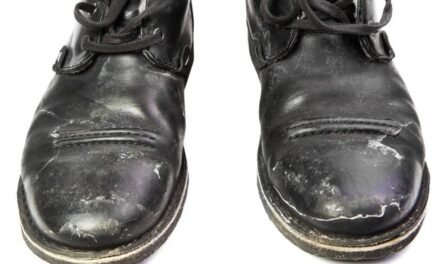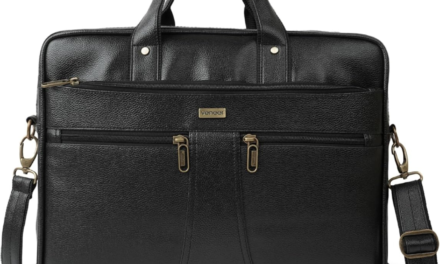Synthetic leather is treated using various techniques to improve its texture and aesthetics, allowing it to mimic the look and feel of genuine leather while offering design flexibility. These treatments are applied during or after the manufacturing process and involve alterations to the surface, color, and finish. Here are the common methods:
1. Surface Texturing
- Embossing:
- A heated metal plate or roller is pressed onto the synthetic leather surface to create a grain pattern that mimics genuine leather, such as full-grain or pebble grain.
- Patterns can range from traditional leather textures to custom designs.
- Microtexturing:
- Advanced techniques create fine, detailed textures for a softer and more realistic feel.
- Perforation:
- Small holes are added to the surface for aesthetic appeal, breathability, and a sportier look, commonly used in automotive and footwear applications.
2. Coatings and Finishes
- Matte or Glossy Finish:
- Coatings are applied to achieve the desired sheen, ranging from a subtle matte look to a high-gloss finish.
- Metallic and Iridescent Effects:
- Special coatings with metallic pigments or reflective materials give the leather a shimmering or multi-tonal appearance.
- Transparent Overlays:
- Transparent protective layers are added to enhance durability and provide a polished, professional look.
3. Dyeing and Coloring
- Solid Colors:
- Synthetic leather is dyed in a wide range of solid colors, ensuring consistency across batches.
- Gradient or Ombre Effects:
- Gradual color transitions are applied for a more dynamic and eye-catching design.
- Hand-Painted Details:
- In high-end applications, parts of the surface may be hand-painted to achieve unique designs or patterns.
4. Softening Treatments
- Foam Backing:
- Adding a soft foam or microfiber layer beneath the synthetic leather enhances its feel and flexibility, making it more comfortable for applications like upholstery or apparel.
- Plasticizer Additives:
- During manufacturing, plasticizers are mixed into the polymer to make the surface softer and more pliable.
5. Specialized Printing Techniques
- UV Printing:
- High-resolution UV printers can apply intricate designs, logos, or custom patterns directly onto the synthetic leather.
- Screen Printing:
- Common for bold, vibrant patterns and large-scale designs.
- Digital Printing:
- Allows for photographic-quality designs with high detail and precision.
6. Laminations and Overlays
- Protective Laminations:
- A clear or tinted laminate is added to protect the surface and enhance aesthetics, such as creating a smoother finish.
- Texture-Enhancing Layers:
- Thin overlays with embossed textures or glossy sheens are applied for visual appeal and improved tactile qualities.
7. Hand-Crafting Techniques
- Edge Finishing:
- Edges are smoothed and dyed to match or contrast with the main surface for a polished look.
- Stitching Details:
- Decorative stitching is added for a handcrafted appearance, mimicking genuine leather products.
8. Heat and Pressure Treatments
- Heat Pressing:
- Heat treatments soften the surface and bond coatings for an even, refined texture.
- High-Pressure Rolling:
- Smooths out imperfections and ensures consistent thickness and texture across the surface.
9. Advanced Surface Modifications
- Laser Etching:
- Creates intricate patterns, logos, or textures directly onto the synthetic leather surface for a customized look.
- Micro-Perforation:
- Adds a breathable yet aesthetically pleasing texture for applications like automotive interiors and sportswear.
10. Decorative Additions
- Embroidery and Appliqués:
- Used to add logos, branding, or decorative elements for enhanced aesthetics.
- Metallic Studs or Rhinestones:
- Embedded into the synthetic leather for a luxurious or edgy look, often seen in fashion items.
11. Eco-Friendly Textures
- Plant-Based Patterns:
- Sustainable synthetic leathers incorporate natural fibers or use bio-based polymers, creating unique textures inspired by nature.
- Minimalist Finishes:
- Matte or natural-looking finishes are applied to appeal to eco-conscious consumers.
Applications of Treated Synthetic Leather
- Fashion:
- Jackets, handbags, wallets, and belts feature embossing, metallic finishes, or laser-etched designs.
- Automotive:
- Seats, dashboards, and door panels use perforated, embossed, or smooth textures for comfort and elegance.
- Furniture:
- Sofas and chairs incorporate soft, matte finishes or textured patterns for aesthetic appeal.
- Footwear:
- Sneakers and boots often feature printed or embossed synthetic leather with gradient or metallic effects.
Benefits of Treatments
- Enhanced Aesthetics:
- Treatments allow synthetic leather to closely replicate or surpass the look of genuine leather.
- Customizability:
- Designers can achieve unique finishes and textures tailored to specific applications or trends.
- Durability:
- Coatings and laminations improve resistance to wear, water, and UV damage, extending product life.
Conclusion
Synthetic leather is treated through a variety of advanced techniques, including embossing, dyeing, coating, and digital printing, to enhance its texture and aesthetics. These treatments make synthetic leather a versatile and appealing choice for industries ranging from fashion to automotive, offering durability, affordability, and customization possibilities.
Hashtags
#SyntheticLeatherTexture #FauxLeatherAesthetics #ArtificialLeatherEnhancements #VeganLeatherDesign #TexturedFauxLeather #LeatherAlternativesInnovation #StylishSyntheticLeather #ArtificialLeatherFinishing #VeganLeatherCrafting







